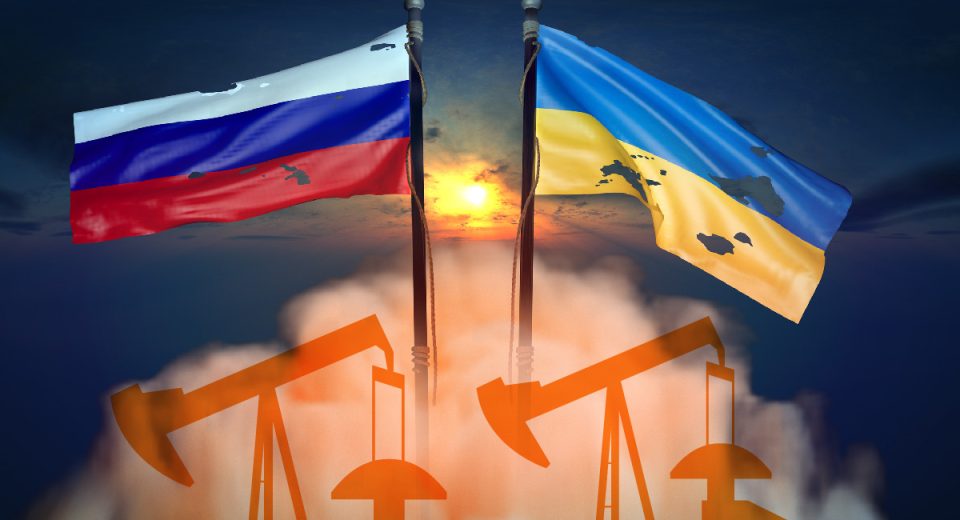How an Escalation in the Middle East Impacts the Markets

Just when the Hamas attack on Israel was close to completing a year, the Middle East conflict took the shape of a global threat. The disruption in trade routes via the Red Sea could push oil prices as high as $130 and eliminate the 0.4 percentage points from the global GDP. Policymakers and central banks worldwide are keeping a close eye on the developments in this region as it may create a divide in the region. This will impact oil prices globally and have a ripple effect across the financial markets. Traders must also keep an eye on how the conflict unfolds to make informed trading decisions.
Supply Chains May Burn in the Crossfire
In the first week of October 2024, Brent added 8% and WTI surged 9.1%. Investors weighed the chances of Israel retaliating to the October 1 attack by putting a dent in the Iranian oil infrastructure. This was while Israel had been trying to de-capacitate the Lebanese Hezbollah. The biggest threat associated with Iran’s direct attack on Israel was a full-fledged war in the Middle East and the Gulf countries being forced to take sides.
As Iran entered the battlefield, the threat of a global divide has also arisen, primarily because Israel claimed to have intercepted the attacks with the help of its allies, the UK, France and the US. An all-out war in the Middle East would mean attacks on the oil infrastructure, which may fracture the supply chain. A disruption in oil supply will support oil prices.
The US, being the largest oil producer, could benefit from rising oil prices. If the Gulf routes are disrupted, the demand for US oil may rise. However, the disruption may affect the gasoline supply to the US, driving prices higher ahead of winter.
The Inflation Engine Could Fire up Again
Hormuz is a key chokepoint for major oil exporters, including Saudi Arabia, Iraq, the UAE, Kuwait and Qatar. Iran has significant control over the Red Sea, and the potential to close the Strait of Hormuz. A disruption there could impact nearly 20 million barrels of oil exports per day. This could again drive oil prices higher.
A region-wide conflict could significantly impact transport costs across Asian and European nations, which have insignificant oil production of their own. This has raised concerns regarding another global inflation spree in the making. Although European policymakers estimate that a 0.1% rise in inflation requires a 10% uptick in oil prices, the world has witnessed that such a scenario isn’t unimaginable. The Russia-Ukraine war drove oil prices to record highs, pushing the European region into recession in 2022.
Bump in the Road to Monetary Easing
On October 1, 2024, inflation in the EU came in below the ECB’s 2% target after more than 3 years. The central bank was consequently expected to lower key interest rates to 3.50%.
The Fed, on the other hand, abandoned its higher-for-longer policy in September. Economic analysts had expected the Fed to lower interest rates by 0.5 percentage points by year-end but the Fed did that in one go.
Central banks did not consider the Middle East conflict a threat to global economic stability, stated Andrew Bailey, Governor of the Bank of England. However, this was before the Iran-Israel conflict heated up.
As inflationary risks surface again, central banks will reassess their decisions. The markets are already speculating on whether the ECB and Fed will pull the plug on monetary easing. This may also intensify the fear of a recession in the US.
Safe Havens in Demand
Geopolitical tensions support the US dollar, the original safe haven currency. Since most global trade is still executed in USD, a rising dollar will make commodity purchases costlier worldwide.
Amid speculations of an intensifying conflict in the Middle East, the greenback has commenced a rally. The DXY gained 1.72 points in the first week of October, continuing on its upward trajectory after the US employment data indicated a resilient job market with 254,000 additions in September in the non-farm segment. An appreciating dollar hurts emerging economies the most.
High safe haven demand supported the Swiss franc as well. As the Eurozone is concerned regarding the risk of another disruption in the oil supply chain, the EUR/USD experienced a pullback.
Gold also surged in the rush to cushion portfolios with safe haven assets.
Global Indices Slide
While oil surges, headwinds from the Middle East conflict weigh on indices. This is despite energy stocks being on an uptrend. Wall Street experienced a slump across major indices in the first week of October 2024, while the European Stoxx 600, Dax, CAC 40 and FTSE 100 lost 1.82%, 3.25%, 4.03% and 0.46% respectively. The Japanese Nikkei declined 1.6% on October 2, 2024, while the Chinese indices continued the rally. This is because China has been forming an alliance with every nation that has the potential to impact the US economy. The red dragon’s strengthening relations with Saudi Arabia and the UAE could have supported the domestic stock market.
Market uncertainties generate opportunities for traders to explore. Derivative instruments, such as contracts for difference (CFDs), allow you to trade both rising and falling asset prices. CFD trading offers exposure to forex, commodities, indices and more. Trading CFDs on margin amplifies your purchasing power but also magnifies potential gains and losses. This makes managing risks critical. Practice on a demo account first before entering the live markets.
To Sum Up
- The escalating Middle East conflict affects the global financial markets.
- Supply chain disruptions may drive oil prices higher, reigniting inflationary fears.
- Central banks may pause monetary easing.
- The conflict supports the US dollar and Swiss franc, while weighing on the euro.
- Major global indices are down as fear sentiment takes over the markets.
Disclaimer:
All data, information and materials are published and provided “as is” solely for informational purposes only, and is not intended nor should be considered, in any way, as investment advice, recommendations, and/or suggestions for performing any actions with financial instruments. The information and opinions presented do not take into account any particular individual’s investment objectives, financial situation or needs, and hence does not constitute as an advice or a recommendation with respect to any investment product. All investors should seek advice from certified financial advisors based on their unique situation before making any investment decisions in accordance to their personal risk appetite. Blackwell Global endeavours to ensure that the information provided is complete and correct, but make no representation as to the actuality, accuracy or completeness of the information. Information, data and opinions may change without notice and Blackwell Global is not obliged to update on the changes. The opinions and views expressed are solely those of the authors and analysts and do not necessarily represent that of Blackwell Global or its management, shareholders, and affiliates. Any projections or views of the market provided may not prove to be accurate. Past performance is not necessarily an indicative of future performance. Blackwell Global assumes no liability for any loss arising directly or indirectly from use of or reliance on such information here in contained. Reproduction of this information, in whole or in part, is not permitted.




